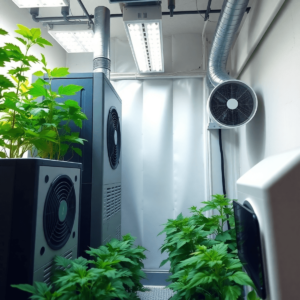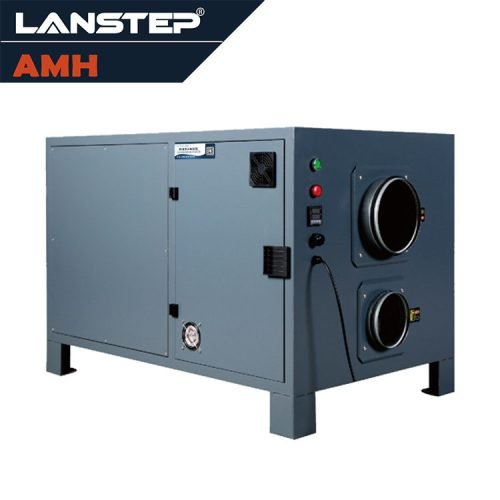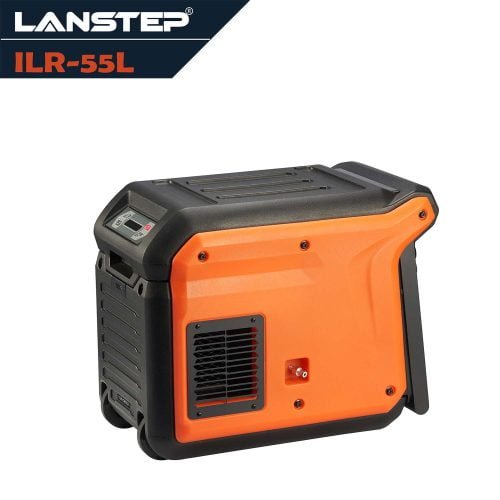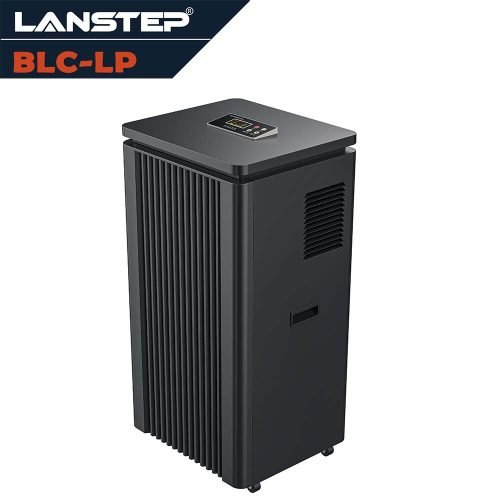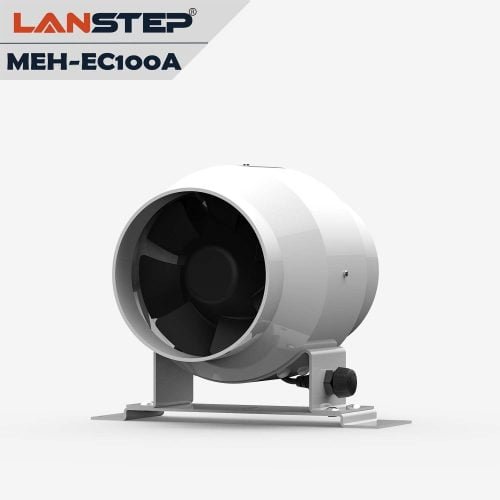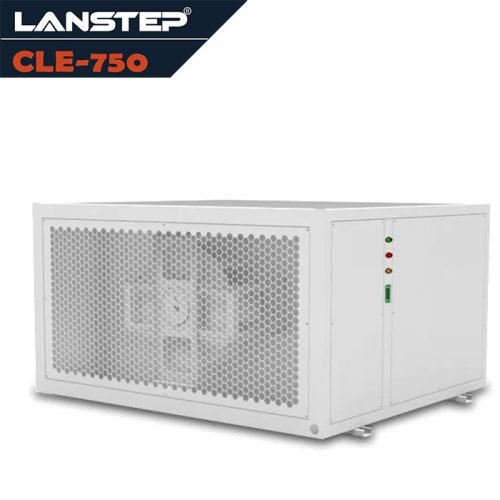The Importance of Humidity Control in Dry Cleaning Stores
In the world of dry cleaning, where precision and excellence are crucial, humidity control becomes an important tool. Dehumidifiers play a vital role in maintaining the delicate balance needed for optimal operations and garment care.
The Role of Dehumidifiers
Dehumidifiers are essential devices in dry cleaning environments. They protect against the negative effects of excessive moisture by regulating humidity levels. This prevents potential damage that could harm both the quality of service and the lifespan of valuable garments.
Understanding Humidity and Its Impact
Humidity refers to the amount of water vapor in the air. In dry cleaning processes, uncontrolled humidity can cause various problems:
- Extended Drying Times: Excess moisture prolongs drying phases, delaying service delivery.
- Compromised Cleaning Quality: High humidity can interfere with solvent efficiency.
- Equipment Downtime: Moisture-induced corrosion affects machinery performance.
How Humidity Affects Fabric Care and Garment Preservation
Taking care of fabrics requires attention to detail. Elevated humidity levels can have harmful effects on textiles:
- Fabric Deterioration: Excessive dampness fosters mold growth and fabric rot.
- Color Fading: Moisture accelerates dye degradation.
- Texture Alteration: Persistent damp conditions may alter fabric texture, leading to customer dissatisfaction.
By using dehumidifiers like the ILA-168L PlantGuard Pro Standing Continuous Run Dehumidifier, dry cleaning stores not only protect clothing but also enhance their service standards. These devices offer continuous operation for effective dehumidification, making them ideal for industrial use.
As we explore further, think about how investing in humidity control solutions improves both operational efficiency and customer satisfaction. The path to innovation lies in embracing tools like dehumidifiers that defend against unseen yet impactful threats such as moisture.
1. Moisture Control with Dehumidifiers
In a dry cleaning store, moisture control is crucial for success. Dehumidifiers, also known as moisture absorbers, play a vital role in creating the right environment by preventing problems caused by moisture, such as mold and mildew growth. These issues are not just bothersome; they can harm both employees’ health and the quality of garments.
How Dehumidifiers Work
A dehumidifier constantly removes excess moisture from the air, lowering humidity levels that promote unwanted growth. Mold spores thrive in damp places, and if left unchecked, they can multiply quickly, potentially causing breathing problems for staff and customers. By using dehumidifiers, dry cleaning stores can greatly reduce these health risks.
The Impact of Humidity on Fabrics
High humidity levels can also harm fabrics. To keep fabrics in good condition, it’s essential to control the environmental factors that cause them to deteriorate. Too much moisture can result in different types of fabric damage:
- Color Bleeding: High humidity may cause dyes to bleed, resulting in faded or discolored garments.
- Weakening of Fibers: Prolonged exposure to moisture can weaken textile fibers, making them more prone to wear and tear.
- Mildew Odor: Damp conditions create odors that can cling to fabrics, reducing garment freshness.
By implementing effective moisture control measures with dehumidifiers, dry cleaning stores can successfully prevent these potential risks. This not only protects their inventory but also improves the quality and longevity of their services.
Broader Applications of Moisture Control
Interestingly, the principles of moisture control are applicable beyond just dry cleaning stores. For example, in agriculture, managing moisture levels is vital for maintaining healthy crops. Excessive moisture can lead to issues like mold growth on plants—something many marijuana growers are well aware of.
Furthermore, understanding moisture control in various contexts can offer valuable insights into different fields such as agriculture and textile care. It’s worth noting that excessive humidity can be detrimental not only to textiles but also to other areas like cultural heritage preservation where it’s crucial to manage humidity levels effectively. Additionally, detailed guidelines on moisture control practices can provide further assistance in various applications.
2. Improved Drying Efficiency with Dehumidifiers
The drying process efficiency in dry cleaning operations is crucial for maintaining a smooth workflow. Integrating dehumidifiers into the drying phase transforms this crucial step, significantly reducing drying times for cleaned garments.
 Impact on Drying Time:
Impact on Drying Time:
- Enhanced Air Circulation: Dehumidifiers optimize air circulation within the drying area, effectively removing excess moisture from the air. This accelerates the evaporation of water from fabrics, allowing garments to dry faster than in a humid environment.
- Consistent Drying Conditions: With controlled humidity levels, dehumidifiers ensure that the drying process remains consistent regardless of external weather conditions. This consistency prevents delays and ensures that all garments are ready for the next stage of care or return to customers.
Benefits of Quicker Turnaround Times:
- Increased Customer Satisfaction: A faster drying process translates into quicker service delivery. Customers appreciate receiving their garments promptly, which enhances their satisfaction and strengthens their loyalty to your dry cleaning business.
- Operational Efficiency: Reduced drying times free up equipment and space for processing more garments within a shorter timeframe. This efficiency allows your business to handle higher volumes without compromising on quality or service standards.
By embracing dehumidification technology, dry cleaners not only boost operational productivity but also enhance their reputation through reliable and timely service. This sets a foundation for sustained customer relationships and long-term success in a competitive industry landscape.
To further improve the drying efficiency, integrating INA-EC200-8 inch Inline Duct Fans with EC Motor into the ventilation system can be beneficial. These powerful duct booster fans enhance airflow and ventilation efficiency, complementing the dehumidification process and ensuring an even more effective drying operation.
3. Quality Preservation through Controlled Humidity Levels
In the world of dry cleaning, fabric quality preservation stands as a paramount concern. Dehumidifiers play a crucial role in this delicate operation, ensuring that every garment receives the care and attention it deserves. But why are dehumidifiers essential in dry cleaning stores, and what role do they play?
Why Dehumidifiers Are Essential in Dry Cleaning Stores
Controlled humidity levels form the backbone of effective garment care. When humidity is left unchecked, fabrics are at risk of absorbing excess moisture, leading to potential damage such as stretching, shrinking, or distortion of fibers. By implementing dehumidifiers, dry cleaning stores can maintain optimal atmospheric conditions, safeguarding garments from these adverse effects.
The Role of Dehumidifiers in Preserving Garment Quality
The preservation of garment quality is not limited to physical integrity alone; odors and deterioration from damp environments pose additional challenges. A damp environment can lead to musty smells infiltrating fabrics or even mold formation, which can be detrimental to both the garment and the store’s reputation. Dehumidifiers mitigate these risks by maintaining a dry atmosphere, thus preventing unpleasant odors and preserving the fresh scent that customers expect when retrieving their cleaned items.
Furthermore, consistent humidity control contributes significantly to extending the lifespan of garments. As fabrics remain in pristine condition longer, customers experience greater satisfaction with the service provided—a crucial factor for repeat business and customer loyalty.
Operational Benefits of Dehumidification Systems
As we delve deeper into the operational benefits of dehumidification systems within dry cleaning environments, we begin to see how they underscore not just quality preservation but also enhance overall service efficiency and customer experience.
4. Hygiene and Sanitation Benefits of Using Dehumidifiers
In the journey of operating a dry cleaning store, maintaining an environment that is both hygienic and welcoming for customers is paramount. Dehumidifiers serve as silent guardians, playing a pivotal role in ensuring this goal is met by significantly reducing allergens and airborne pollutants.
Contribution to Cleaner Environments
Dehumidifiers meticulously extract excess moisture from the air, creating inhospitable conditions for dust mites, mold spores, and other common allergens. By mitigating these elements, dehumidifiers help to foster a space that is not only more comfortable but also healthier for those who work in or visit the store.
In environments where garments are being processed, various chemicals and residues can become airborne. Advanced dehumidification systems effectively capture these pollutants, leading to improved air quality within the premises.
Promoting Better Hygiene Standards
The strategic use of dehumidifiers elevates hygiene standards across every facet of dry cleaning operations.
For Staff: Employees benefit from a cleaner atmosphere which can lead to enhanced well-being and reduced incidences of respiratory issues often associated with high humidity environments laden with pollutants.
For Customers: A commitment to maintaining a sanitized environment reassures customers about the safety and care taken with their garments. This diligence can translate into trust and loyalty, essential components for business success.
By integrating state-of-the-art dehumidifiers into your store’s infrastructure, you pave the way for a pristine environment that aligns with modern expectations of cleanliness and health-conscious service delivery.
Energy Efficiency and Cost Savings with Modern Dehumidifiers
When it comes to running a successful dry cleaning business, being energy efficient is key to long-term success. Energy-efficient dehumidifier models are game changers, combining advanced technology with smart financial choices. These modern devices not only regulate humidity levels but also minimize energy usage, creating a win-win situation for both the environment and your profit margins.
Understanding the Importance of Energy Efficiency in Dry Cleaning
Effective humidity control is essential in the dry cleaning industry. It directly impacts the quality of your services, the longevity of your equipment, and ultimately, your bottom line. Here’s why energy efficiency matters:
- Reduced Utility Costs: By using energy-efficient dehumidifiers, you can significantly lower your monthly utility bills. These devices are designed to operate optimally while consuming less energy compared to traditional models.
- Extended Equipment Lifespan: Excessive workload on heating and cooling systems can lead to wear and tear over time. With precise humidity management offered by these dehumidifiers, you can reduce the strain on your HVAC equipment, prolonging its lifespan.
- Environmental Responsibility: As a business owner, it’s important to consider your carbon footprint. By investing in energy-efficient technologies, you’re taking steps towards reducing environmental impact and promoting sustainability.
The Role of Innovative Manufacturers
Leading manufacturers like LANSTEP understand the unique needs of commercial spaces such as dry cleaning establishments. They offer a wide range of dehumidifier models specifically designed for this industry.
Introducing LANSTEP’s BLC-LP Series
One standout option is LANSTEP’s BLC-LP Series which incorporates state-of-the-art technology to deliver exceptional performance while minimizing energy consumption. These units are built tough to withstand the demanding conditions found in dry cleaning operations without compromising efficiency.
The Potential Impact on Your Business
To illustrate the potential benefits further:
- Imagine integrating an energy-efficient dehumidifier like CLE500 into your facility—capable of removing up to 500 pints of moisture per day while maintaining an impressive A++ energy efficiency rating.
- This strategic investment could lead to substantial reductions in utility expenses each year—allowing you to allocate those savings towards other areas of growth within your business.
Complementing Solutions for Enhanced Efficiency
In addition to advanced dehumidifiers, there are other solutions available that can further optimize energy efficiency within your operations:
- Inline Duct Fans with EC Motors: LANSTEP’s inline duct fans featuring EC motors ensure optimal airflow and performance in inline duct systems—making them ideal partners for these cutting-edge dehumidifiers.
- EasyConnect Duct Inline Duct Fans: Designed specifically for high-demand environments such as grow tents or dry cleaning facilities, LANSTEP’s MSA-EC300Z-11.5 inch EasyConnect Duct Inline Duct Fans provide reliable exhaust solutions that complement the moisture removal capabilities of our products.
A Holistic Approach Towards Sustainability
By embracing these innovative technologies—both through our range of products and strategic partnerships—you are not only improving operational efficacy but also positioning yourself as a leader in sustainable practices within the dry cleaning industry.
This proactive approach towards environmental stewardship aligns with growing consumer preferences for eco-friendly businesses—a factor that can significantly influence customer loyalty and brand reputation.
As we continue exploring various ways controlled humidity environments benefit dry cleaners specifically (such as enhanced garment care), it becomes clear that investing strategically in such solutions is vital for long-term success in this competitive market.
Protecting Equipment from Damage: The Role of Dehumidifiers
In the high-stakes environment of dry cleaning stores, where precision and care are paramount, the protection of expensive machinery is a critical concern. Humidity control emerges as a silent guardian, ensuring that these valuable investments are shielded from the relentless assault of moisture-induced damage.
Why are dehumidifiers essential in dry cleaning stores?
Consider this: high humidity levels can lead to the formation of condensation on metal surfaces, accelerating corrosion and rusting that could compromise machinery integrity. In a setting where equipment such as pressing machines, steamers, and conveyors must perform flawlessly, even minor degradation can result in costly repairs or replacements.
Dehumidifiers play an indispensable role by maintaining optimal moisture levels, effectively preventing corrosion and extending the lifespan of these vital machines. By regulating the ambient humidity, they ensure that condensation does not occur, safeguarding both electronic components and mechanical parts.
 The implementation of proper dehumidification strategies offers long-term benefits that go beyond immediate equipment protection. These strategies reduce maintenance costs and minimize downtime associated with repairs. Additionally, preserving machinery health contributes to consistent operational efficiency, which is crucial for maintaining quality service and customer satisfaction.
The implementation of proper dehumidification strategies offers long-term benefits that go beyond immediate equipment protection. These strategies reduce maintenance costs and minimize downtime associated with repairs. Additionally, preserving machinery health contributes to consistent operational efficiency, which is crucial for maintaining quality service and customer satisfaction.
Interestingly, the versatility of dehumidifiers extends beyond dry cleaning stores. For instance, the LANSTEP AMD series desiccant dehumidifier has been successfully applied in a museum in Bosnia and Herzegovina. This application demonstrates how portable dehumidifiers can provide precise humidity control to protect valuable artifacts from moisture damage—showcasing the broad range of benefits these devices offer across different sectors.
Investing in robust dehumidification solutions is not just about avoiding potential pitfalls—it’s about laying a foundation for sustainable success.
Compliance with Health Regulations: Ensuring Proper Humidity Levels
In the ever-changing world of dry cleaning, it is essential to follow health regulations regarding humidity control. These rules are not optional; they are mandatory. Regulatory authorities have set specific guidelines to ensure that dry cleaning environments maintain good air quality and cleanliness standards. These regulations aim to protect both the quality of clothing and the well-being of employees and customers.
Key Compliance Requirements
Here are the main requirements that dry cleaning facilities must comply with:
- Humidity Levels: Industry standards often dictate that humidity levels in dry cleaning facilities should be maintained between 30% and 50%. This range is critical to prevent mold growth, fabric damage, and other moisture-related issues.
- Monitoring Systems: Regular monitoring and recording of humidity levels are mandatory. Advanced dehumidification systems equipped with sensors can automate this process, ensuring consistent compliance without manual intervention.
- Documentation: Facilities are often required to maintain detailed records of humidity levels as part of their compliance reporting. This documentation serves as evidence during inspections by health authorities.
Consequences of Non-Compliance
Failing to adhere to these regulations can have serious repercussions:
- Legal Penalties: Dry cleaners may face fines or sanctions if they do not meet prescribed humidity standards.
- Reputation Damage: Non-compliance can lead to negative publicity, affecting customer trust and loyalty.
- Operational Shutdowns: In severe cases, regulatory bodies may temporarily close facilities until compliance is achieved.
By actively managing humidity levels with top-of-the-line dehumidifiers, dry cleaning businesses not only meet regulatory requirements but also show their dedication to providing excellent service and being environmentally responsible. Investing in dependable dehumidification solutions is a crucial step in protecting business operations from the dangers of non-compliance.
Choosing the Right Dehumidifier for Your Dry Cleaning Store
Selecting the right dehumidifier is crucial for the success of your dry cleaning store. The criteria for choosing a dehumidifier should be tailored to meet your specific needs, allowing for efficient moisture control and enhanced garment care.
Key Considerations in Dehumidifier Selection
1. Size and Capacity
- The dehumidifier’s capacity should align with the square footage of your store. For larger spaces, a unit with higher capacity is necessary to effectively manage humidity levels.
- Consider models that can handle the volume of garments processed daily, ensuring consistent performance without overworking the device.
2. Energy Efficiency
Opt for models that offer energy-saving features to maintain cost-effectiveness over time. High-efficiency units reduce electricity consumption while providing robust humidity control.
3. Environment Compatibility
- Assess whether you need a portable or stationary unit based on your store layout and operational dynamics.
- Evaluate noise levels and choose a dehumidifier that operates quietly, maintaining a pleasant atmosphere for both staff and customers.
Recommended High-Performing Models
As you explore different options, here are some models that stand out due to their advanced technology and reliability:
- Panasonic Compressors: Known for energy efficiency and durability, these models are ideal for commercial settings where consistent performance is critical.
- LANSTEP Series: With customizable features and superior moisture control capabilities, LANSTEP offers an array of portable commercial dehumidifiers tailored for diverse environments:
- Models like the BLC-LP Series and ILA-50LP-R290 provide flexibility with different drainage methods and capacities.
- The ILD-90LP-R290 unit is designed to accommodate high humidity areas, ensuring comprehensive coverage across large spaces.
- For specific needs such as grow room dehumidification, the CLA-240L-CropDry Max model is highly recommended due to its high-capacity and effective moisture removal capabilities.
Choosing the right dehumidifier not only improves your operations but also helps maintain garment quality. Each model has its own benefits that can align with your business goals, leading to happier customers and repeat business. If you’re interested in exploring business cooperation opportunities with a renowned manufacturer of dehumidifiers like LANSTEP, you can contact them here.
Versatile Applications of Dehumidification Systems within Dry Cleaning Operations
In the complex world of dry cleaning, using dehumidifiers in various areas is a key factor that turns ordinary tasks into a well-orchestrated blend of efficiency and quality. The main reason why dehumidifiers are crucial in dry cleaning shops is because of their wide range of uses, each one aimed at improving the level of care and service offered.
Key Areas of Dehumidifier Integration
1. Storage Rooms
A properly maintained storage environment is essential for keeping garments intact before and after cleaning. Dehumidifiers control moisture levels, stopping mold from growing and making sure fabrics stay in perfect condition. By protecting against too much humidity, dehumidifiers shield inventory from harm, thereby preserving value and customer confidence.
2. Garment Care Processes
Within the busy center of garment processing, having controlled humidity is vital for achieving consistent results. Dehumidifiers assist in maintaining ideal conditions that stop fabric from shrinking or warping during cleaning cycles. This meticulousness strengthens the dry cleaner’s reputation for excellence.
3. Reception and Customer Interaction Areas
First impressions count, and a fresh, odor-free atmosphere speaks volumes to customers about professionalism and care. Dehumidifiers keep these areas welcoming by eliminating smells related to dampness, thus improving the overall customer experience.
Elevating Service Quality through Humidity Control
Aside from operational advantages, the importance they hold in providing top-notch service cannot be overlooked. Customers regularly receive garments that appear flawless and smell pleasant—results directly linked to efficient humidity control.
- Consistency and Repeat Business: When clients are aware they can depend on your establishment for consistently high-quality outcomes, repeat business is practically guaranteed. Proper humidity management ensures every garment keeps its intended texture, color, and shape—crucial elements in customer satisfaction.
- Brand Reputation: In an industry where reputation means everything, dehumidifiers contribute to building a brand known for reliability and excellence. They serve as silent allies in your promise to deliver outstanding service.
Innovations in Dehumidification Technology
The smooth implementation of dehumidification systems throughout various aspects of dry cleaning operations highlights their essential role. These systems not only boost operational effectiveness but also greatly enhance service quality.
For example, LANSTEP provides advanced dehumidification solutions tailored to different requirements such as portable commercial dehumidifiers and industrial ducted dehumidifiers. Their products feature intelligent control systems for easy upkeep and peak performance.
Additionally, specific models like the SMC-EC200 8 Inch Silenced Inline Fans with EC motor offer powerful yet quiet ventilation—perfect for soundproofing applications within dry cleaning businesses.
As we explore further into the numerous ways these systems improve business success, the path toward operational mastery continues uninterrupted. The triumph stories from users of these state-of-the-art dehumidification systems only reinforce their worth in turning dry cleaning operations into a paragon of efficiency and quality.
Conclusion: Investing in Effective Moisture Control Solutions for Success as a Dry Cleaner
The world of humidity control shows us that dehumidifiers are more than just extra tools—they’re crucial for excellence in dry cleaning. They do more than just manage moisture; they play a key role in ensuring quality, efficiency, and cleanliness.
Why are dehumidifiers so important? Here’s a quick summary of the benefits:
- Preservation of Garment Quality: By keeping humidity levels just right, dehumidifiers stop mold, mildew, and fabric damage from happening, protecting the integrity of garments.
- Operational Efficiency: Faster drying times mean quicker service for customers, leading to higher satisfaction and loyalty.
- Hygiene and Safety: Cleaner spaces with fewer allergens result in better health standards for both employees and customers.
To enjoy these advantages, investing in specialized industrial dehumidifiers like the ones offered by BLA-L-Warehouse can make a huge difference. These machines offer efficient moisture control specifically designed for dry cleaning businesses.
But remember, effective moisture control isn’t solely reliant on dehumidifiers. Using quiet inline fans can greatly improve ventilation without causing noise disturbances. This combination of advanced dehumidification systems and optimal ventilation strategies puts your business in a strong position to succeed as customer expectations change and regulations become stricter.
Dry cleaners find themselves at a point where old methods meet new technology. Choosing effective moisture control solutions is not just a smart decision but an absolute must for those who want to be leaders in the industry.
FAQs (Frequently Asked Questions)
Why are dehumidifiers essential in dry cleaning stores?
Dehumidifiers play a crucial role in maintaining optimal humidity levels, which is vital for fabric care and garment preservation. They help prevent moisture-related issues like mold and mildew, ensuring that cleaned garments remain in top condition.
How do dehumidifiers improve the drying efficiency of garments?
Dehumidifiers enhance the drying process by reducing humidity levels, which shortens drying times for cleaned garments. This leads to quicker turnaround times, improving customer satisfaction and operational efficiency.
What impact does controlled humidity have on fabric quality?
Maintaining controlled humidity levels with dehumidifiers helps preserve garment quality by preventing odors and deterioration caused by damp environments. This ensures that fabrics remain fresh and intact over time.
What hygiene benefits do dehumidifiers provide in dry cleaning operations?
Dehumidifiers contribute to cleaner environments by reducing allergens and airborne pollutants. This promotes better hygiene standards for both staff and customers, making the dry cleaning store a healthier place.
How can modern dehumidifiers lead to cost savings for dry cleaners?
Energy-efficient dehumidifier models can significantly reduce utility costs over time by effectively managing humidity. Investing in these modern solutions not only enhances operational efficiency but also supports long-term financial savings.
What should I consider when choosing a dehumidifier for my dry cleaning store?
Key considerations include the size and capacity of the dehumidifier based on your store’s specific needs. It’s recommended to look for high-performing models like Panasonic compressors or LANSTEP series that are well-suited for commercial settings.

 Impact on Drying Time:
Impact on Drying Time:

